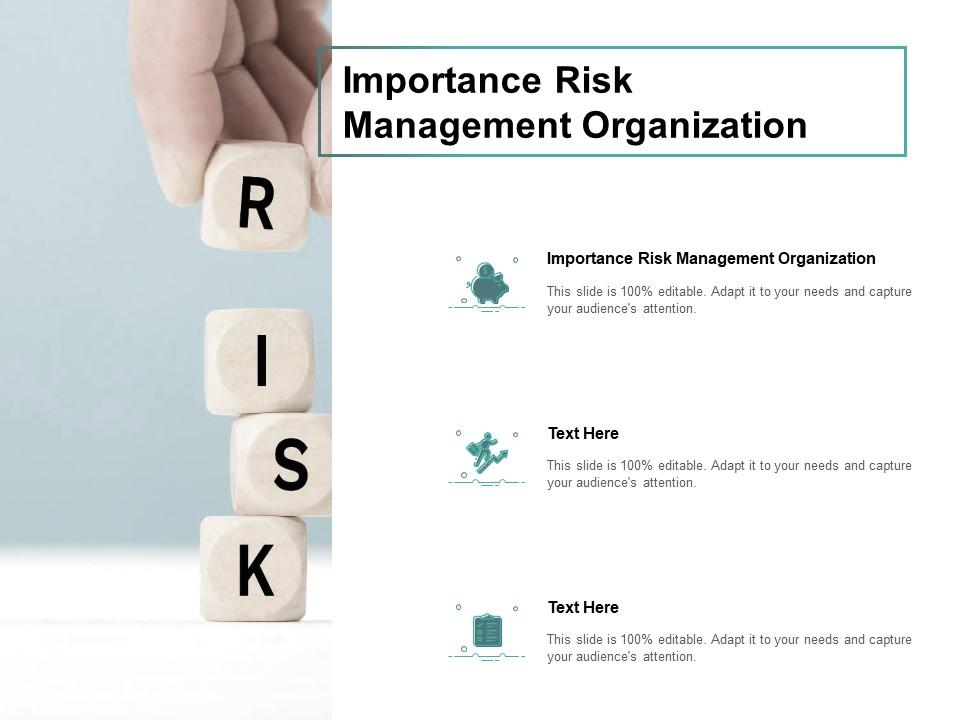The Value of Recognizing the Value of Risk Management in Numerous Industries

The Core Concept of Risk Management and Its Function
Risk Management, the foundation of lots of sectors, pivots on the recognition, examination, and mitigation of unpredictabilities in an organization setting. It is an integral method that enables organizations to protect their assets, reputation, and overall survival. By properly determining prospective dangers, services can develop approaches to either protect against these risks from happening or lessen their influence. The assessment procedure entails analyzing the probability and possible severity of these threats. Once threats have actually been recognized and examined, the reduction process involves creating techniques to reduce their prospective effect. This process is cyclical and ongoing, making certain that businesses are gotten ready for the ever-changing nature of Risk in various sectors. The key objective, therefore, is to cultivate strength among unpredictabilities.
Benefits of Implementing Risk Management in Organization Workflow

Introducing the Function of Risk Management in Different Industries
While every industry confronts its distinct set of threats, the execution of Risk Management approaches remains a typical in their pursuit of sustainability and growth. In the healthcare field, Risk Management involves making click here to read sure individual safety and security and data defense, while in money, it involves mitigating investment dangers and guaranteeing governing compliance. Inevitably, the role of Risk Management across markets is to determine, analyze, and reduce dangers.
Real-life Study Showing Effective Risk Management
To understand the significance of Risk Management in these numerous industries, one can aim to several real-life instances that highlight the successful application of these procedures. As an example, in the energy sector, British Oil developed Risk reduction plans post the 2010 Gulf of Mexico oil spill. They implemented better safety and security treatments and more stringent guidelines which substantially lowered further accidents. In money, Goldman Sachs effectively browsed the 2008 financial dilemma by identifying potential mortgage-backed protections risks early. Toyota, publish the 2011 quake in Japan, changed its supply chain Management to minimize interruption dangers. These cases show how markets, learning from crises, efficiently used Risk Management strategies to lower future risks.
Future Trends and Developments in Risk Management Approaches
As the globe proceeds to develop, so as well do the fads and growths in Risk Management strategies. Quick developments in technology and data analytics are improving the Risk landscape. Huge information and AI are currently crucial in forecasting and reducing dangers. Organizations are leveraging these tools to build anticipating designs and make data-driven choices. Cybersecurity, once a peripheral issue, has catapulted to the forefront of Risk Management, with approaches concentrating on avoidance, discovery, and feedback. The combination of ESG (Environmental, Social, Governance) variables into Risk Management is another growing pattern, reflecting the raising recognition of the role that social and ecological threats play in company sustainability. Therefore, the future of Risk Management lies in the fusion of sophisticated modern technology, innovative strategies, and a holistic site link method.
Verdict
In verdict, recognizing the significance of Risk Management throughout a spectrum of markets is important for their longevity and prosperity. Customized strategies can assist mitigate prospective dangers, guard assets, and foster stakeholder trust fund. Additionally, positive decision-making aids in regulative compliance and enhances source usage. Inevitably, effective Risk Management contributes to much more sustainable and resistant services, resource highlighting the relevance of this practice in today's extremely competitive and dynamic service setting.
While every industry challenges its special collection of risks, the execution of Risk Management methods continues to be a common denominator in their search of sustainability and development. In the health care industry, Risk Management involves making sure individual security and data defense, while in finance, it entails mitigating financial investment threats and making sure governing compliance. Eventually, the function of Risk Management across markets is to determine, assess, and mitigate threats. These situations demonstrate just how markets, learning from situations, effectively applied Risk Management approaches to lower future risks.
